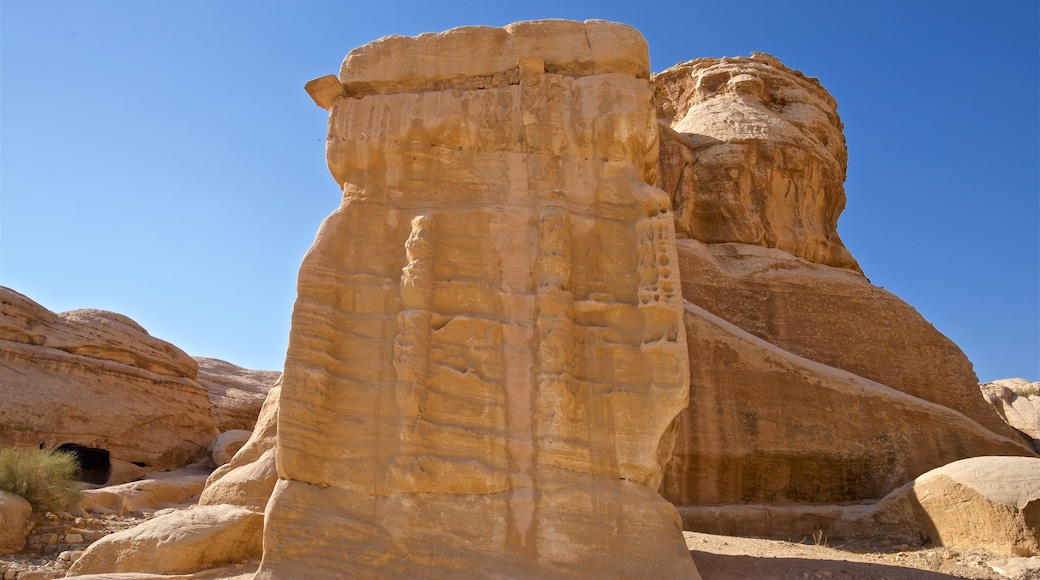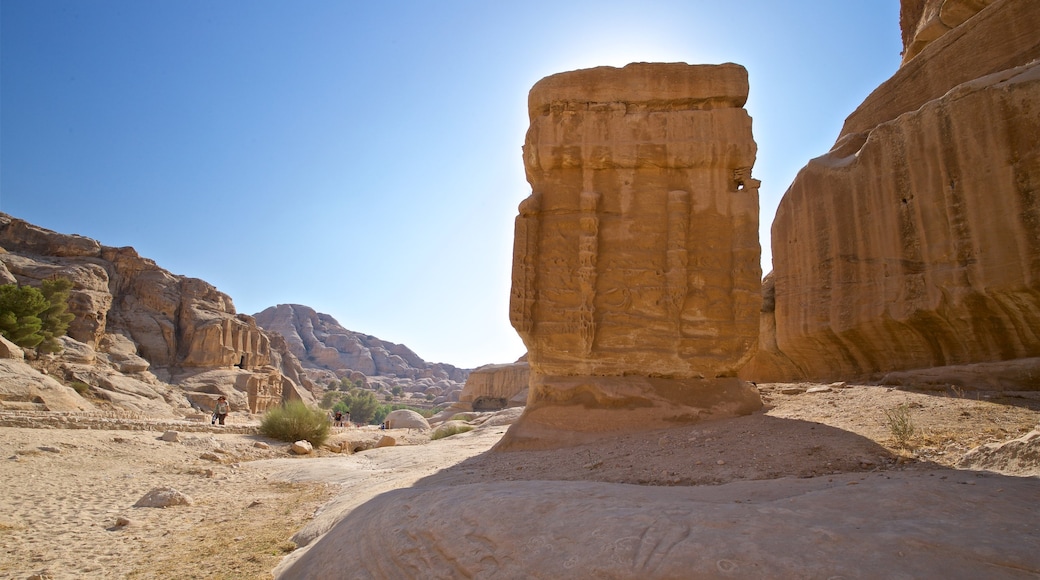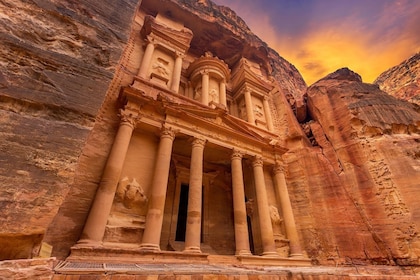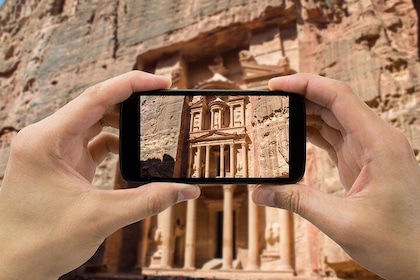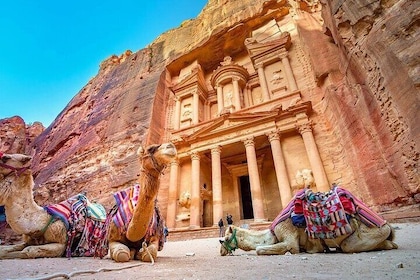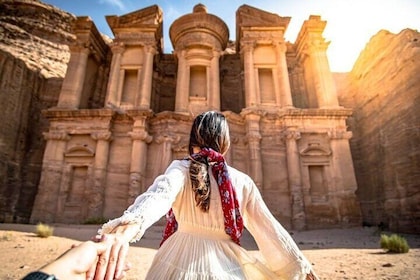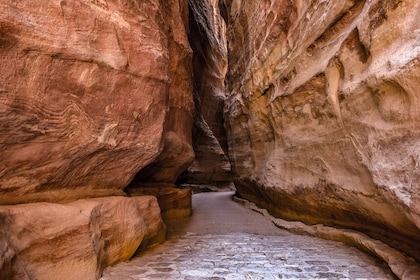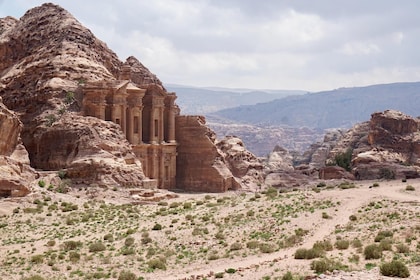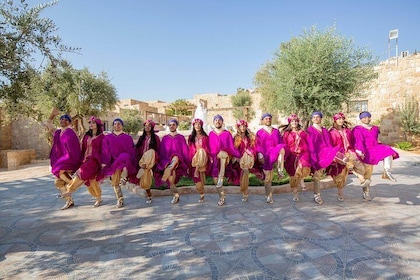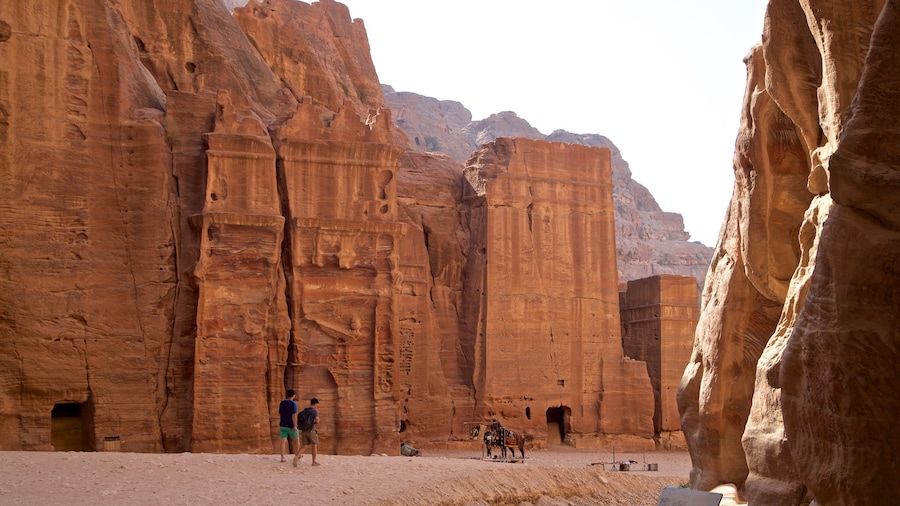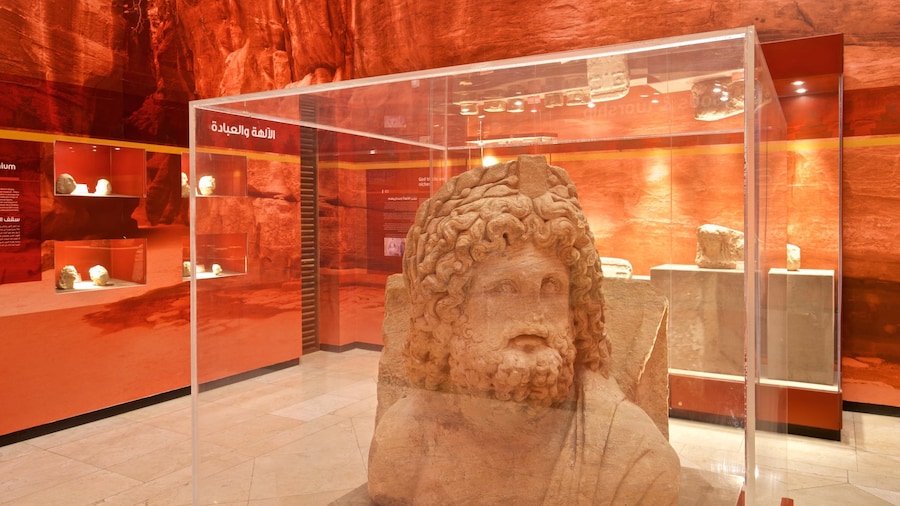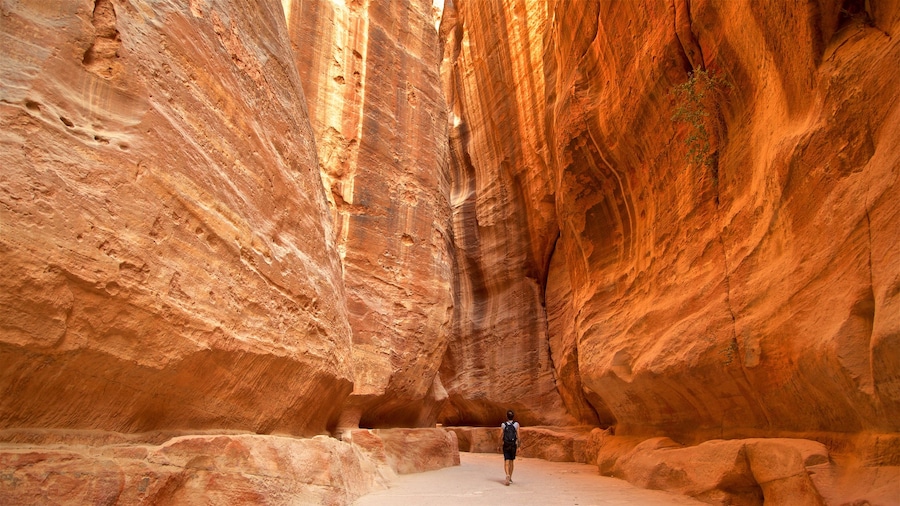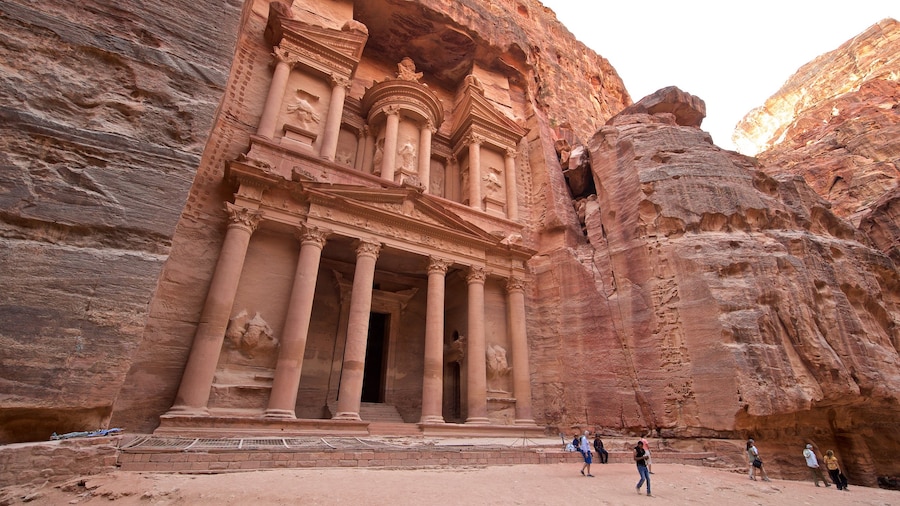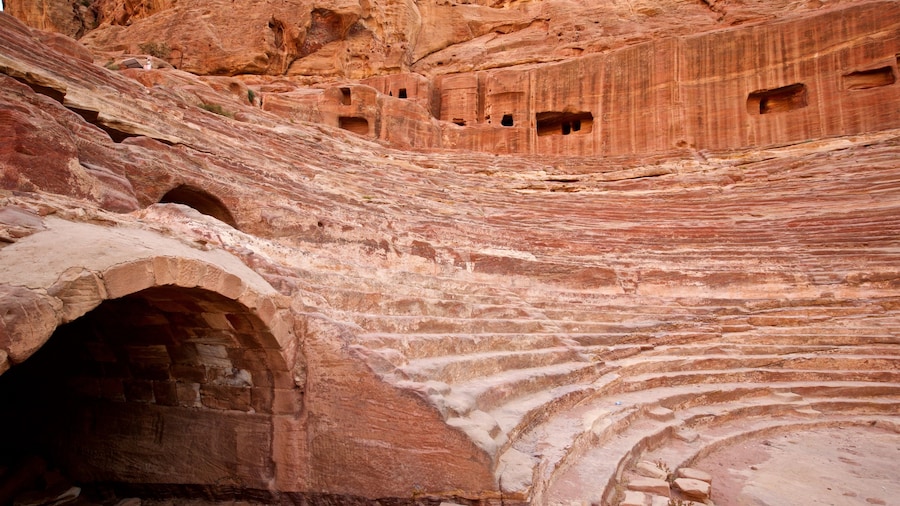On the path to the Siq are three sandstone behemoths whose meaning and functionality continue to baffle archaeologists millennia after their construction.
The Djinn Blocks are made up of three huge cubic monuments within the archaeological site of Petra. Constructed by the Nabateans in the 1st century, the blocks, their meaning and their function remain somewhat of a mystery to archaeologists. Diverge from the well-trodden path of Petra and stumble upon these intriguing and impressive cubes.
Visit the blocks as part of a tour and chat with the guide to learn about the leading theories relating to their meaning. One school of thought suggests the blocks may have served as a symbol for funerals and mausoleums, potentially making these the oldest tombs in the region. Some people suggest the monuments related to the deities of fertility and water. Snap photos of the huge three-part monument as something to help you remember your trip. Making up the scenic backdrop are the golden rock formations of Petra.
The cubes have an iconic status in Petra as the entrance and exit to the ruins. Within the middle of the three blocks are a pair of tombs. The structures were carved out of solid sandstone and were thought to have initially been part of a larger project that was discarded.
Admire the well-preserved condition of the stone monuments. Note that the name of the blocks is Arabic for spirit and it is where the English word genie comes from.
Find the Djinn Blocks between the Petra Visitor Center and the portal of the Siq in the archaeological site of Petra. Walk southwest from the hotel zone of Wadi Musa for about 10 minutes to reach the site. You can also get up and down the trail with less exertion via camels or donkeys. Bring enough water and sunscreen to protect you from the afternoon heat. Make sure to visit neighboring attractions, such as the Obelisk Tomb, the Al-Khazneh and the Nabatean Theater.
